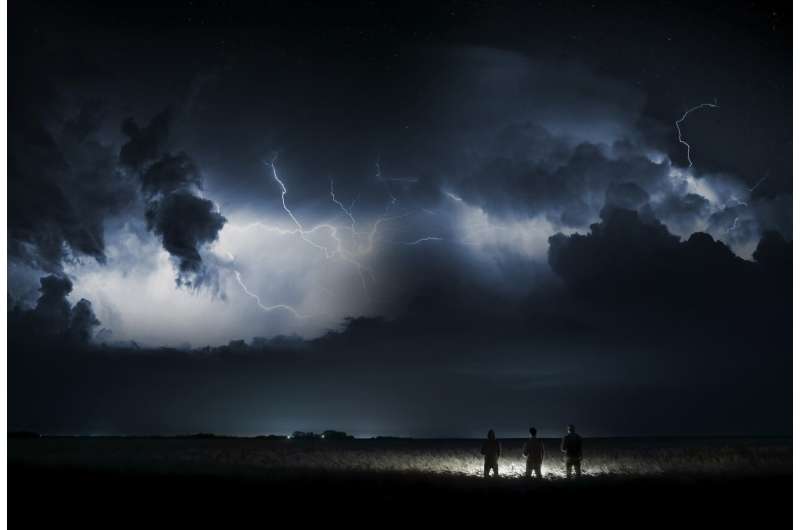This article has been reviewed according to Science X's editorial process and policies. Editors have highlighted the following attributes while ensuring the content's credibility:
fact-checked
trusted source
proofread
Advances and challenges in understanding compound weather and climate extremes

In the context of global warming, many extremes, such as heat waves, heavy precipitation, and droughts, have become increasingly frequent and intense, as expected theoretically. Somewhat unexpectedly, these extremes have also exhibited tightened linkage in both time and space, constituting compound weather and climate extremes with larger impacts.
During the past decade, compound events received considerable attention, with much progress in event typology, impacts, changes and risks already made.
A study led by Prof. Zengchao Hao (College of Water Sciences, Beijing Normal University) and Prof. Yang Chen (State Key Laboratory of Severe Weather, Chinese Academy of Meteorological Sciences) explores more than a dozen recent compound events. The paper is published in the journal Science China Earth Sciences.
By synthesizing nearly 350 peer-reviewed papers, the authors thoroughly documented definitions and impacts, physical mechanisms, and historical/future changes as well as attribution evidence with respect to 13 reported and relatively well-studied compound events. Some of these events are specific to East Asian monsoonal regions.
They also pointed out deficiencies and gaps in existing studies on each of these events. At the end of the review, they attempted to identify data and methodological challenges common to the field and came up with outlooks on the future directions of the emerging topic.
More specifically, they laid out their review by order of definition, mechanisms, changes, and attribution. For each of the reviewed events, the authors adopted an impact-centric approach to introduce the definition by illustrating how the fashion of compounding aggregated and amplified impacts. Distinct from previous reviews on some types of compound events focusing largely on long-term changes, the new review assigned a large volume of space to the underlying physical processes, especially from the dynamic (including monsoon dynamics) and multi-sphere interactive perspectives.
Despite the rapid development of event attribution methods, attribution dedicated to compound events remains in its infancy. The author team also tried to assess the confidence of attribution conclusions for compound events, where they are available, and to figure out the source of attribution uncertainties.
In the prospect section, the authors introduced unique requirements on data and methodological design to study compound events, as opposed to those for univariate extremes. In particular, much longer records, both in observations and simulations, are warranted to sample compound events sufficiently. For statistical fitting, model evaluation and metrics constructed for attribution, inter-event dependence or coincidence should be factored in.
Regarding mechanistic diagnosis, potential interactions among drivers of different scales and spheres, and exposure and vulnerability altered by the concurrence and/or sequence of extremes must be addressed in a proper manner. As with attribution, given the difficulty in simulating the interacting and cascading processes in most free-running attribution models, a storyline scheme that reproduces the dynamic unfolding of events faithfully represents a promising way forward.
For the projection and risk assessment, internal variability of various scales should no longer be treated as noise, but rather seen as an indispensable driver that is equivalently important to external forcings in shaping the compounding pattern of events.
The review might be used as a general guide to identify and analyze compound events and also adds some incentives for multi-disciplinary collaborations to better prepare against and adapt to compound hazards in a changing climate.Sciences.
More information: Zengchao Hao et al, Research progresses and prospects of multi-sphere compound extremes from the Earth System perspective, Science China Earth Sciences (2024). DOI: 10.1007/s11430-023-1201-y
Provided by Science China Press




















